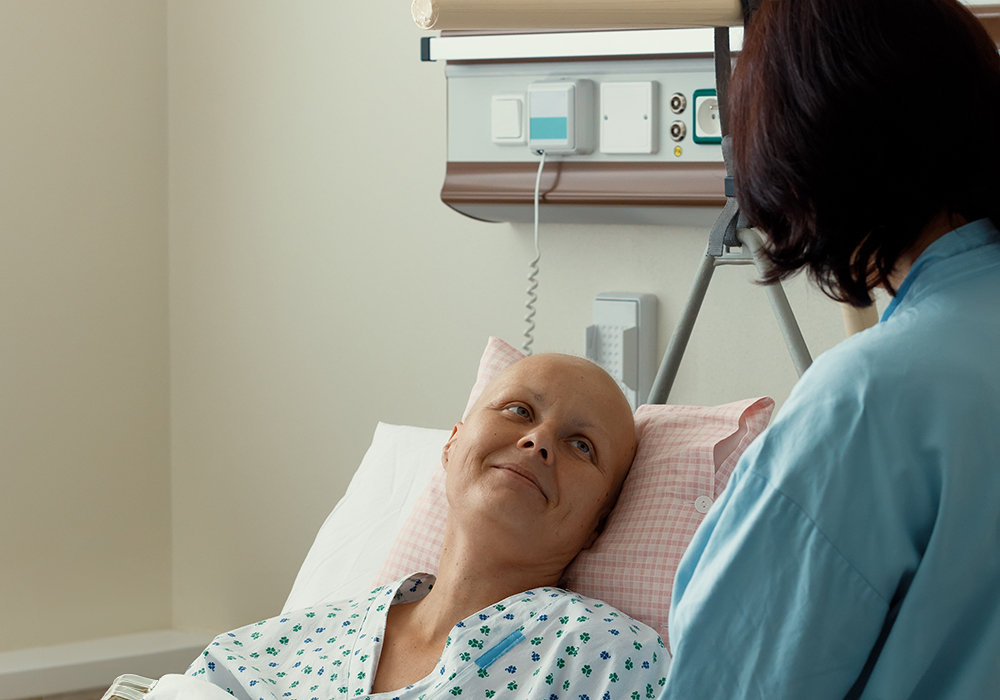Sofia is a 35-year-old patient who identifies as female who was recently diagnosed with breast cancer and is concerned with experiencing chemotherapy-induced alopecia (CIA) as an adverse event from treatment. She comes in for her first infusion of adriamycin plus cyclophosphamide and is using scalp cooling to prevent hair loss. She works as a project manager, which requires her to keep her camera on for her many daily video calls. She is very anxious about losing her hair and asks you if taking minoxidil in addition to the scalp cooling treatment would guarantee she maintains her hair.
What Would You Do?
Patients report that CIA is one of the most distressing side effects of treatment, and the body image concerns they experience can affect treatment outcomes. Scalp cooling treatments having been used since the 1970s to prevent CIA because the vasoconstrictive effects may decrease the concentration of chemotherapy in the scalp. Minoxidil causes vasodilation of smooth muscle cells in peripheral arteries, which is the opposite effect of scalp cooling treatment, but some studies have shown that topical minoxidil decreases the duration of alopecia.
Sofia is the first patient to ask you about using both treatments together, and you are unsure of how to answer her question. You tell her that you will find out the information and get back to her. You remember reading in one of the weekly ONS Voice updates that the ONS Guidelines™ on Cancer Treatment-Related Skin Toxicities were recently published. You review the ONS guidelines for the recommendations regarding CIA and using scalp cooling in combination with minoxidil. From your own experience, all of your patients receiving adriamycin have experienced CIA.
The ONS guidelines do not state anything about benefits or risks related to CIA management with a combination of scalp cooling treatment and topical minoxidil. However, they do recommend that scalp cooling treatment alone or minoxidil topical treatment alone can prevent CIA. You find another article that said that minoxidil is not recommended for use during chemotherapy, but it can be used after completion of chemotherapy. Because the evidence appears conflicting, you consult with the oncologist who says Sofia can try simultaneous scalp cooling treatment and minoxidil topical treatment to prevent CIA, despite the lack of literature support for using the two strategies in combination.
You share your findings from the literature and the oncologist with Sofia, and she decides to try both treatments during her chemotherapy journey. However, after three cycles of adriamycin plus cyclophosphamide, Sofia starts losing her hair and decides to stop scalp cooling and minoxidil therapy. You provide her with patient education about hair regrowth after chemotherapy.






